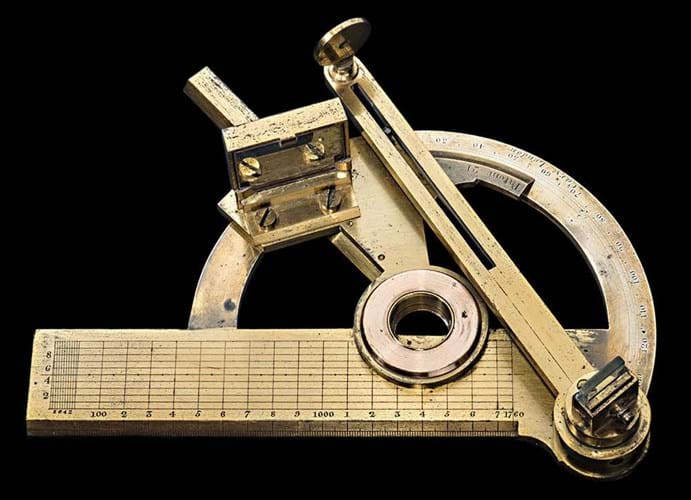
Invented by Sir Howard Douglas (1776-1861), a military engineer and surveyor, in 1811, this miniature sextant significantly speeded up the process of plotting readings on maps by combining the functions of a sextant and protractor into a single tool.
In his design, the limb with the peep-sight has a slot that engages with a pin on the index arm, meaning that the measured angle is the same as the indicated angle – not the case with regular sextants where observation is made using double reflection and the scale is compressed.
Douglas’ version also has a flat back, allowing the instrument to be laid directly on a map, plan or chart and the reading to be plotted directly, eliminating the need to transfer the measurement to a protractor.
The early, numbered example is engraved Patent 21 and Cary, London, relating to the noted scientific instrument maker William Cary (c.1759-1825).
It is offered at the fair for £750.
Olympia debut
This edition of the Scientific Instrument Society’s fair is the first as part of the Antique Arms Fair in London Olympia. It takes place on September 21 in the venue’s Pillar Hall, where collectors in both areas can hunt out crossover objects such as gunner’s levels.
Among the other dealers standing at the SIS fair is Boris Jardine trading as Octavo Books. Among his highlights is a set of 1888 relief maps by LR Klemm for teaching the blind.
Bookings are still being taken for tables. Contact sis@sisoffice.org.uk.














